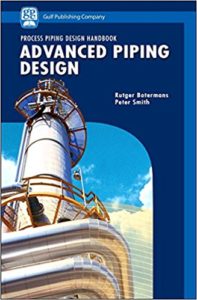Advanced Piping Design Volume 2
Advanced Piping Design Volume 2
Advanced Piping Design is an intermediate-level handbook covering guidelines and procedures on process plants and interconnecting piping systems. As a follow up with Smith’s best-selling work published in 2007 by Gulf Publishing Company, The Fundamentals of Piping Design, this handbook contributes more customized information on the necessary process equipment required for a suitable plant layout, such as pumps, compressors, heat exchangers, tanks, cooling towers and more! While integrating equipment with all critical design considerations, these two volumes together are must-haves for any engineer continuing to learn about piping design and process equipment.
You can also Read The Fundamentals of Piping Design Volume 1
Advanced Piping Design Volume 2 Product details
- Series: Process Piping Design Handbook (Book 2)
![Advanced Piping Design]()
- Hardcover: 248 pages
- Publisher: Gulf Publishing Company; 1 edition (May 2008)
- Language: English
- ISBN-10: 1933762187
- ISBN-13: 978-1933762180
- Product Dimensions: 6 x 0.6 x 9 inches
- Shipping Weight: 1.2 pounds
Listed next are the considerations that have to be reviewed when positioning the equipment during the development of the plant layout. They have not been listed in an order of priority; however, safety is listed at the top as the most significant issue.
- Safety: fire, explosion, spillage, escape routes for personnel, and access for firefighters.
- Process flow requirements that result in an efficient plant.
- Constructability.
- Segegation of areas for hazardous and nonhazardous materials.
- Operability and maintainability.
- Available plot area, geographical limitations.
- Relationship to adjacent units or other facilities within the plant.
- Economics.
- Future expandability.
- Security: control of access by unauthorized personnel.
- Meteorological information: climate, prevailing and significant wind direction.
- Seismic data.
Fluid flow requirements (for example, gravity flow systems, pump suction heads, and thermosyphonic systems) often dictate relative elevations and necessitate the need for structures to achieve the different elevations. Limitations of pressure or temperature drop in transfer lines decide the proximity of pumps, compressors, furnaces, reactors, exchangers, and the like.
Download
Advanced Piping Design Volume 2
2nd Link Here


Comments are closed.